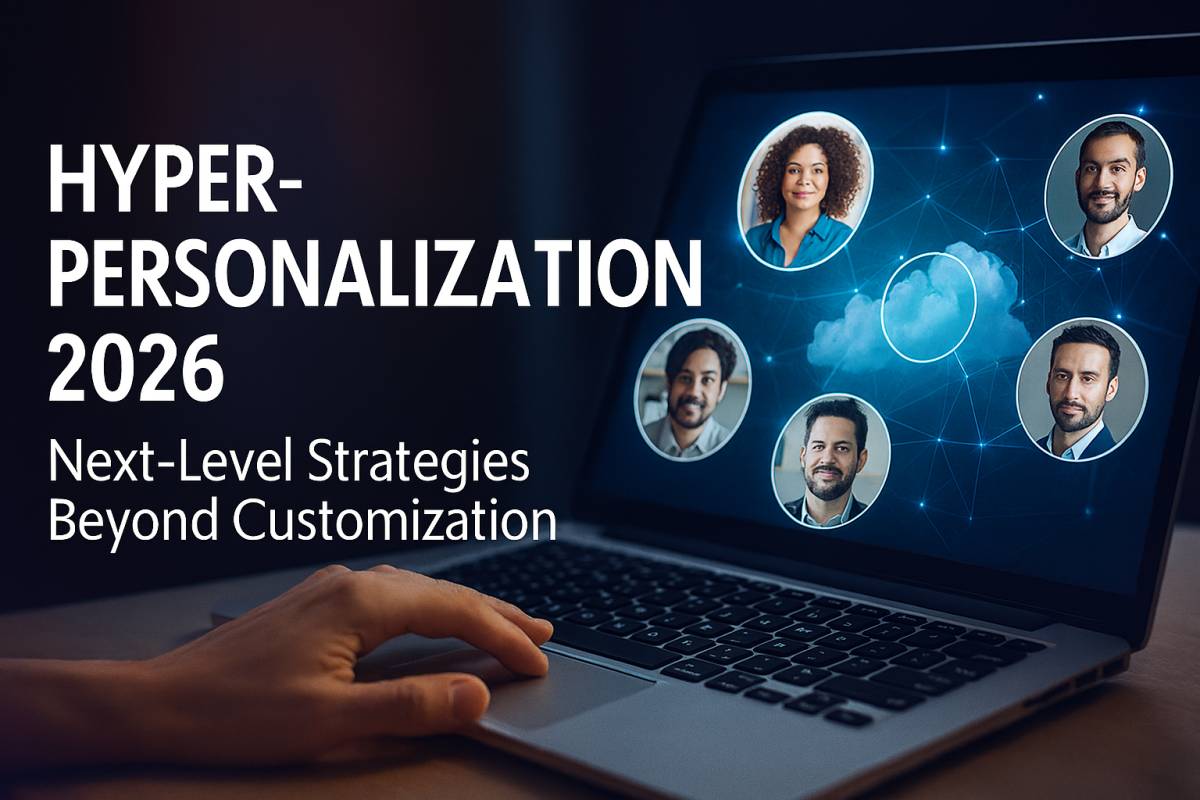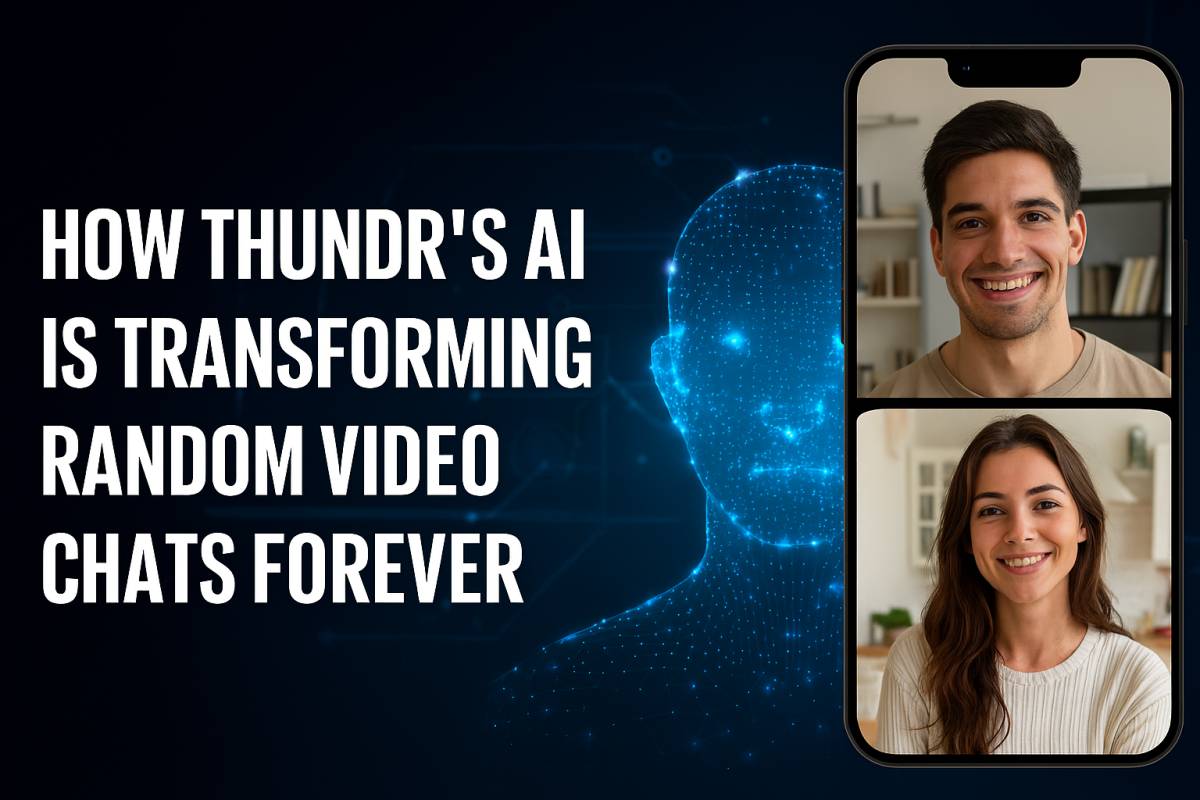Hyper-Personalization 2026: Next-Level Strategies Beyond Customization

In 2026, hyper-personalization means far more than simply addressing a customer by name or showing them products they browsed. It’s about using real-time behavioural data, artificial intelligence (AI), predictive analytics, contextual signals (like location, device, time of day), and even emotion cues to create experiences that feel uniquely “you.” It’s where brands anticipate customer needs before they articulate them—delivering the right message, in the right channel, at the right moment—and doing so at scale.
Why the Shift from Customization to HyperPersonalization
Customization vs Hyper-Personalization
- Customization: You set your preferences. Example: user picks favourite genres, filters, or theme colours.
- Hyper-Personalization: The system learns, predicts, adapts, and acts—even without manual preferences. It uses a holistic view of you and your context.
What’s Driving the Change
- Customer expectations have skyrocketed: many feel brands treat them like numbers, not individuals.
- The technology stack (AI/ML, IoT, cloud) is now capable of processing huge volumes of data in near real-time.
- Traditional data models (cookie-based tracking, broad segments) are being disrupted—brands need new methods.
- Business pay-offs are clear: personalised experiences are linked to higher conversion, retention and loyalty.
The 2026 Landscape – Recent Stats & Market Size
- The global hyper-personalization market is projected to grow from US$21.79 billion in 2024 to US$25.73 billion in 2025, at a CAGR of 18.1%.
- Forecasts suggest it could reach US$49.6 billion by 2029, assuming a similar growth trajectory.
- According to research:
- 92% of businesses are already using AI-driven personalization to drive growth.
- 80% of businesses report increased consumer spending (averaging ~38% more) when experiences are personalised.
- 71% of consumers expect personalized interactions, and 76% feel frustrated when they don’t happen.
- Despite the growth, challenges persist: 63% of digital-marketing execs say they struggle to deliver truly tailored experiences across channels.
These figures show hyper-personalization is not optional—it’s becoming mandatory for companies that want to stay relevant.
Core Technologies Powering Hyper-Personalization
Artificial Intelligence (AI) & Machine Learning (ML)
These let brands process massive datasets, uncover hidden patterns, and make predictions about user behaviour (next purchase, churn risk, preferred channel).
Predictive Analytics
Instead of just reacting to past behaviour, predictive models forecast what a user might do next, enabling proactive personalization.
Natural Language Processing (NLP) & Conversational AI
Used for chatbots, voice assistants, and interactive content that can interpret user intent, sentiment, and context to tailor communication.
Internet of Things (IoT) & Real-Time Context
Wearables, smart devices, location sensors – these provide contextual signals (like your current location, activity level, environment) that can trigger personalised experiences.
Unified Customer Data Platforms (CDPs) & Data Integration
For hyper-personalization to work, brands must break down data silos, integrate online + offline data, and build unified single-customer views. Without this foundation, personalization efforts remain fragmented.
Next-level Strategies for 2026
Here are actionable strategies for brands that want to go beyond customization and deliver hyper-personalized experiences in 2026.
1. Real-Time Data Fusion
- Gather data not just on click behaviour, but on device type, location, time of day, context (weather, local events), previous purchases, loyalty status.
- Use streaming analytics to make decisions in real time—e.g., change offers if user is in a store vs at home.
- Tip: Build pipelines that ingest heterogenous data (web, app, IoT) and feed your personalization engine.
2. Predictive Journey Mapping
- Instead of static segments, create dynamic “next-best-action” paths per user: what they will likely need next, and how best to deliver it.
- Example: If a customer has browsed high-end running shoes, show them a personalised video comparing those shoes + an accessory bundle + a training plan.
3. Dynamic Content & Adaptive UX
- Webpages, app interfaces and marketing messages adapt instantly based on who the user is and their moment of engagement.
- Example: A returning user sees “Welcome back, [name] – here’s what you were looking at yesterday” vs a new user sees “Welcome! Here’s best sellers for you”.
- Use generative AI to tailor copy, images and offers for each user.
4. Emotion & Sentiment Personalization
- Incorporate emotion-detection (tone in chat, facial detection, voice sentiment) to adjust responses.
- Example: If a support chat detects frustration, escalate to a human and offer a special discount.
- Important: This has to be done ethically and transparently.
5. Voice and Conversational Personalization
- With voice assistants and smart speakers ubiquitous, personalize via voice interface: “Hey [Name], based on your last workout, here’s your recovery snack suggestion.”
- Allow users to opt-in for voice-driven experiences tied to their preferences & context.
6. Augmented Reality (AR)/Virtual Reality (VR) Personalization
- Retail and e-commerce can deliver personalised AR try-ons, in which the app adapts lighting, suggestions, accessories based on user profile and behaviour.
- Example: A makeup brand shows you how lipstick looks on your skin tone + style + previously purchased shades.
Real-World Industry Examples
- Retail: One retailer reported a 35% increase in sales after implementing hyper-targeted product recommendations.
- E-commerce: Brands using AI-powered product-auto-cart features (adding items customers likely want) saw basket sizes grow.
- Media & Entertainment: Streaming platforms use predictive models to reduce churn by delivering content you didn’t know you’d like.
Challenges & Ethical Considerations
Data Privacy & Trust
- Collecting rich data is great—but customers are increasingly wary. Misuse or unexpected personalization can feel creepy.
- Brands must be transparent: how they use data, what they collect, how they protect it.
Data Integration & Infrastructure
- A major hurdle is data silos and inconsistent systems. Without unified data, personalization breaks down.
- Scale matters: achieving hyper-personalization for millions of customers requires robust tech stack, fast analytics, and AI operations.
Maintaining the Human Touch
- Automation is powerful, but the experience must still feel human. Over-automation or purely robotic interactions can damage brand perception.
- Use personalization to enhance human-to-human feel, not replace it with mechanical messages.
Preparing for 2026: Roadmap for Brands
- Audit your data landscape: Do you have unified customer profiles? Are offline + online data connected?
- Choose the right tech: CDPs + AI/ML platform + real-time analytics are fundamental.
- Start with key use-cases: E.g., cart abandonment, next-best-offer, churn prevention. Prove value early.
- Design for context & emotion: Build triggers based on real-time context (location, device) and emotional cues (chat sentiment).
- Prioritize transparency & ethics: Inform users, give them control, secure your systems.
- Measure right: Go beyond clicks to business value—e.g., incremental revenue, retention lift, customer lifetime value.
- Iterate and scale: Personalization is not a “set it and forget it” project. It evolves as customer behaviours and technologies evolve.
The Future Beyond 2026
Looking ahead, hyper-personalization will likely evolve into even more immersive experiences. Think: brain-computer interfaces, full-body AR/VR experiences, and predictive mood-based triggers. Brands will compete on how well and how respectfully they can anticipate needs without crossing privacy or ethics boundaries.
Conclusion
Hyper-personalization in 2026 isn’t simply another marketing buzzword—it’s the evolution of delivering meaningful, context-rich, and individual experiences. Brands that master this will not only convert more—but build loyalty, trust and long-term value. To get there, you’ll need the right data architecture, tech stack, strategy and ethical framework. If you’re still stuck at “basic personalization”, now is the time to move forward.









